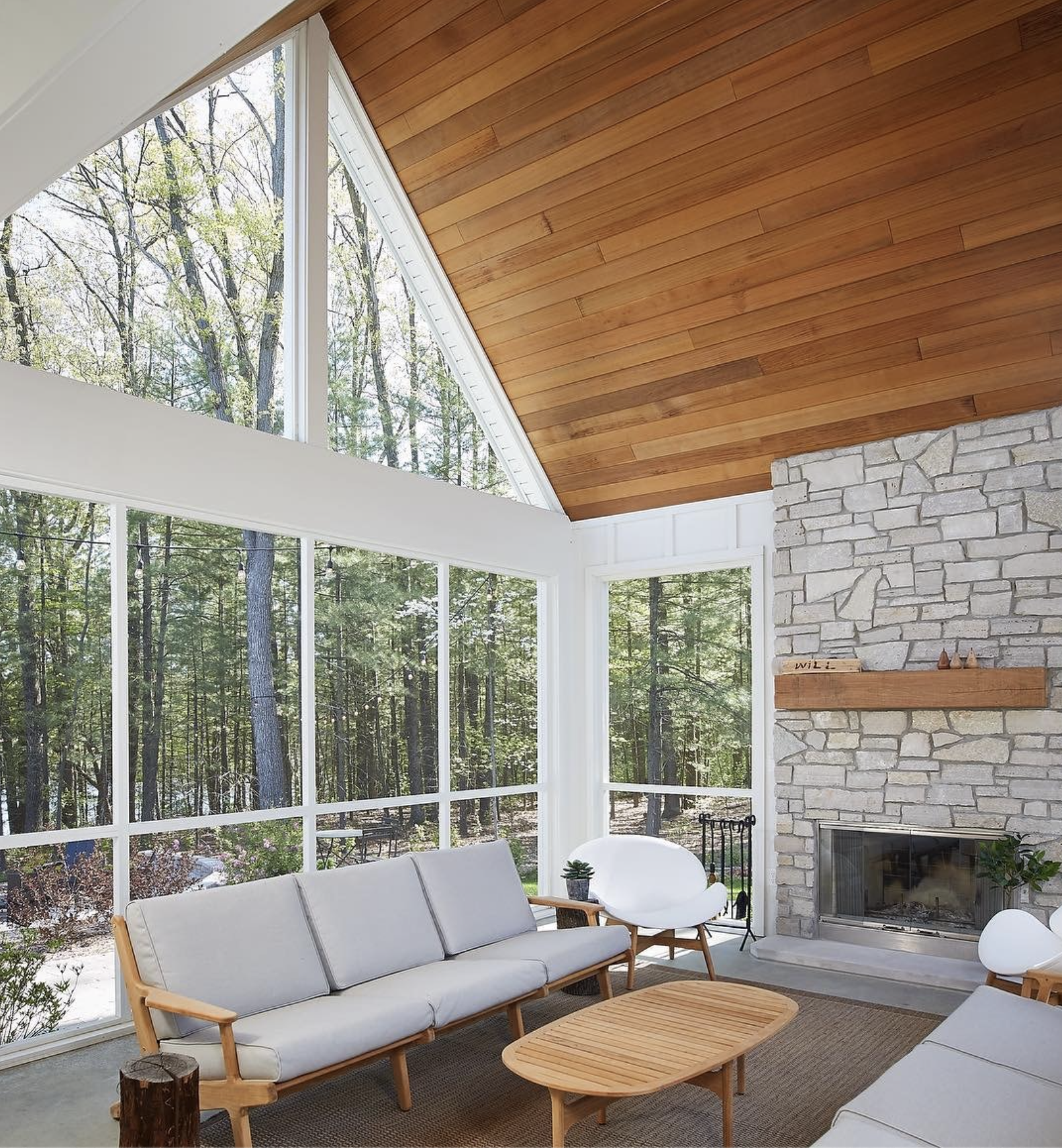10 Things to Consider Before Buying a Mid-Century Modern Home
Credit: Teass Warren Architects
There’s nothing quite like the clean lines, open layouts, and seamless indoor-outdoor living of a mid-century modern (MCM) home. For architecture lovers, these homes are more than just places to live—they're works of art. But purchasing a true mid-century home comes with unique challenges and considerations that aren’t always obvious at first glance.
As a real estate professional with a passion and deep expertise in MCM architecture, I help clients navigate both the beauty and the complexity of these iconic homes. Here are the top 10 things every homebuyer should consider before purchasing an original mid-century modern home.
1. Flat or Low-Pitched Roofs: Beauty vs. Drainage
One of the signature elements of MCM homes is the roofline—flat, shed, or butterfly roofs that make a dramatic architectural statement. However, these sleek roof styles require vigilant maintenance.
What to look for:
Pooling water or sagging areas, especially in corners.
Evidence of previous leaks or patchwork repairs.
Whether the roofing material has been recently updated (tar-and-gravel roofs, for example, are outdated and problematic).
Why it matters:
These roofs often lack proper overhangs and gutters, which can lead to drainage issues. When problems arise, the cost of roof replacement is higher than average due to both the design complexity and the desire to maintain architectural integrity.
Credit: Pella
2. Original Windows & Glazing: Glass Walls with a Catch
The expansive glass walls and clerestory windows of mid-century homes are central to their open, nature-integrated design. However, they come with challenges.
What to look for:
Single-pane glass (standard in the 1950s and ‘60s) that offers little insulation.
Corroded or warped aluminum or steel frames.
Signs of fogging or broken seals in any later double-paned replacements.
Why it matters:
Modern energy efficiency standards weren’t on the radar when these homes were built. Retrofitting new glazing into original window frames can be expensive and must be done with care to preserve the architectural rhythm and design.
3. Slab Foundations & Hidden Risks
Many MCM homes were built on slab foundations with no basement or crawlspace. In some cases, radiant heating was embedded directly into the slab.
What to look for:
Cracks in flooring, especially near exterior walls or door frames.
Evidence of shifting, like sticking doors or uneven floors.
Warping or discoloration that could indicate past moisture intrusion.
Why it matters:
Slab repair is invasive. If a radiant heating system fails, repairs may require breaking through the concrete slab—disruptive and costly, especially if the floors are original terrazzo, cork, or vintage tile.
Credit: David Heitur
4. Electrical Systems: Not Built for Modern Life
In the 1950s, 60-amp electrical service was the norm. But today, it’s inadequate for homes filled with modern appliances, smart systems, and electric vehicles.
What to look for:
Old fuse boxes or undersized breaker panels.
Two-prong (non-grounded) outlets.
Aluminum wiring (used in some 1960s homes) which can be a fire hazard.
Why it matters:
Upgrading an MCM home’s electrical system can involve rewiring and re-routing behind original wood paneling or plaster walls—costly if done carefully to preserve aesthetics. But it’s essential for safety and functionality.
5. Plumbing: Galvanized and Aging Fast
Mid-century homes often used galvanized steel pipes, which are now past their prime. Early copper systems can also show signs of age.
What to look for:
Low water pressure or rust-colored water.
Evidence of patch jobs or exposed pipework.
Water stains or bubbling paint near bathrooms and kitchens.
Why it matters:
Galvanized pipes corrode from the inside out, reducing water flow and increasing the chance of leaks. Replacing plumbing in a slab-foundation home can require cutting into concrete, which dramatically increases cost and complexity.
6. Heating & Cooling: Retro Systems with Modern Expectations
Many MCM homes weren’t built with ductwork, and often rely on outdated baseboard heaters, radiant systems, or wall furnaces.
What to look for:
Age and condition of existing heating system.
Lack of central air conditioning.
Ductless mini-split systems (which are a modern workaround).
Why it matters:
Retrofitting central HVAC into a mid-century home without compromising its clean lines is an art. Options like high-velocity systems or mini-splits can offer modern comfort with less disruption—but at a higher upfront cost.
Credit: The Plum Guide
7. Original Materials & Finishes: Priceless and Irreplaceable
From warm wood paneling and beamed ceilings to cork flooring and ceramic tile bathrooms, mid-century homes often feature custom or now-discontinued materials.
What to look for:
Condition of wood paneling, built-ins, and cabinetry.
Cracked or mismatched tiles in bathrooms or kitchens.
Worn cork flooring or refinished terrazzo.
Why it matters:
Preserving these finishes is key to maintaining the home’s architectural integrity—but sourcing replacements (or craftspeople with the right skills) can be expensive. In some cases, restoration is the only viable path.
8. Energy Efficiency: Room for Improvement
Insulation was minimal or nonexistent in many original MCM builds. Combine that with large panes of single-glazed glass, and you’ve got an energy sieve.
What to look for:
Drafty windows or doors.
No insulation in the roof or exterior walls.
Outdated or undersized HVAC units.
Why it matters:
Improving efficiency often requires creative solutions—like adding rigid insulation above flat roofs or upgrading to low-E glazing while preserving sightlines. These upgrades can make the home more comfortable without compromising its look.
9. Moisture Management: A Common Pitfall
Flat roofs, slab-on-grade construction, and minimal roof overhangs make MCM homes vulnerable to water intrusion.
What to look for:
Staining on ceilings or baseboards.
Signs of wood rot around window frames or door jambs.
Inadequate grading or landscaping that slopes toward the home.
Why it matters:
Moisture damage can be subtle and widespread before it’s visible. Water intrusion can ruin original finishes and lead to mold, rot, and structural problems. Always inspect for proper drainage and waterproofing.
Credit: ModArchitecture
10. Historic or HOA Guidelines: Restrictions with Rewards
Some MCM neighborhoods—like Hollin Hills, Holmes Run Acres, Carderock Springs, and Rock Creek Woods—are part of historic preservation districts or have active architectural review boards.
What to look for:
Design covenants or historic overlay zoning.
Rules governing additions, materials, or exterior paint colors.
Restrictions on solar panels, fencing, or even landscaping.
Why it matters:
These rules protect the neighborhood's visual integrity and property values—but they can limit how you renovate or expand. Understanding the guidelines upfront will help avoid surprises down the road.
Final Thoughts: Know Before You Buy
Mid-century modern homes are some of the most inspiring, livable, and historically significant homes you can own—but they also require thoughtful stewardship and planning. Knowing what to look for can help you protect your investment and preserve the home’s unique charm.
As a Realtor with a deep passion for modernist design, I help buyers navigate the joys and challenges of purchasing these architectural icons. Whether you're searching for a Charles Goodman masterpiece or simply love the clean lines and connection to nature, I’m here to help you find the right home—and the right team—to make it yours. So, let’s connect; If you’re in the DC metro region I would love to work with you directly, and if you’re somewhere else, I would be happy to introduce you to an MCM expert wherever you are!






